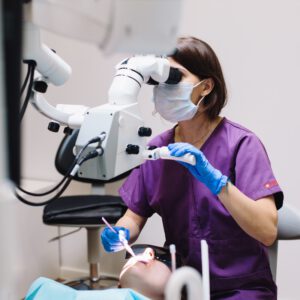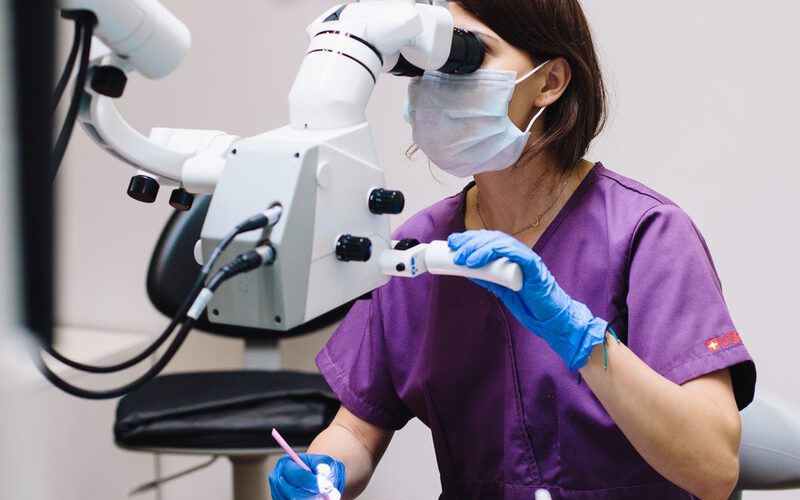Dentist Las Vegas has special training in the oral care of their patients. Their care areas include the teeth, gums, muscles of the head and neck, the tongue, salivary glands, and the nervous system of the head and neck.
A dentist may also spot warning signs in the mouth that indicate a health problem elsewhere in the body and refer patients to specialists or physicians.

It’s a common saying, but it is true: “prevention is better than cure.” Maintaining good oral hygiene by brushing your teeth twice daily and flossing once, eating a balanced diet, avoiding tobacco, sugary foods and drinks, using mouthwash approved by the American Dental Association (ADA), limiting alcohol consumption and visiting your dentist regularly can save you a huge amount in terms of costs for treatments such as fillings, extractions or dental surgery.
Keeping your mouth healthy also helps to prevent many health problems that can be caused by poor oral care. Bacteria from your mouth can travel through your bloodstream to other parts of the body, where it can cause inflammation and infection. Research has linked infections in the mouth with conditions such as heart disease, diabetes, pregnancy complications and a variety of cancers.
Regular oral hygiene practices help to control the growth of bacteria, preventing the development of dental problems like gingivitis and bad breath. It is important to brush your teeth correctly, twice a day with a fluoride toothpaste, clean between your teeth with floss or interdental brushes, and visit your dentist every six months for a check-up.
It’s also important to drink plenty of water, eat a balanced diet, and not chew gum or other hard objects that can damage your teeth. If you have a habit of grinding your teeth, consider getting a night guard to prevent damaging them.
Aside from preventing tooth decay, gum disease and bad breath, good oral hygiene keeps your body healthy in general by reducing your risk of serious diseases such as heart disease, stroke, diabetes and even some forms of cancer. When you have a healthy smile, it boosts your self-esteem and confidence and can make you feel more comfortable when eating, speaking or laughing. This can have a positive effect on your quality of life, helping you to feel happier and more energetic. It is therefore a good idea to look after your smile, as well as your overall health and wellness.
Oral health is often considered a window into general health. Research has linked common oral infections with serious general health conditions like heart disease and diabetes. Maintaining good oral hygiene, starting at a young age and continuing throughout life, is key to maintaining overall health and well-being.
It’s important to brush twice daily with a soft-bristled toothbrush and fluoride toothpaste, floss at least once per day, using a pick or other tool recommended by a dental professional, and to rinse regularly with an alcohol-free mouthwash. It’s also important to visit your dentist for routine cleanings and exams at least every six months. If you have a history of oral health problems or other risk factors, your doctor may recommend more frequent visits.
Besides preventing oral diseases, preventive care can help you find out about a condition before it causes symptoms and helps you get the right treatment, when it’s most effective. Preventive care services include physical exams, screenings, tests and vaccines. These services are offered by CDPHP’s health plan members at no additional cost, and they’re included in your regular doctor visits.
Most people know they should brush their teeth morning and night, floss at least once per day, and visit the dentist for routine cleanings and exams. Yet, many don’t practice these healthy behaviors, leading to tooth decay and gum disease, which can lead to more serious health issues down the road.
Other factors that contribute to poor oral health include smoking, eating a high-sugar diet, and having certain illnesses or medications, such as HIV/AIDS, osteoporosis, rheumatoid arthritis, or an immune system disorder that causes dry mouth (Sjogren’s syndrome). It’s important to tell your dentist about the health conditions you have, including any medicines you take, so they can create a personalized health plan for you.
we provide you with the tools and support you need to be proactive about your health. Learn more about our preventive care services, and visit our website for health information and tips to keep you and your family healthy.
Dentists have a unique perspective on the mouth. They see the conditions inside and can often predict disease in other parts of the body. For example, an overgrowth of yeast can lead to oral thrush, which may indicate HIV or leukemia. The presence of gum disease can signal other health problems like diabetes. The dentist can also detect signs of heart conditions by examining the mouth for swollen or bleeding gums.
Oral diseases are common and can cause serious problems if left untreated. Many are preventable by practicing good oral hygiene, including brushing twice a day and flossing at least once. The most prevalent oral diseases are dental caries (tooth decay), periodontal disease and oral cancers. Other diseases of the mouth are cleft lips and palates, noma (a severe gangrenous condition that starts in the gums mostly affecting children) and oral trauma.
Dental diseases are caused by a variety of factors, including the food we eat, smoking, alcohol consumption and poor hygiene. They can be prevented or treated in their early stages. The most important role of the dentist is to educate patients about preventive care, diagnosis and treatment of oral diseases. It is essential for a dental professional to have excellent communication skills so they can explain complex topics in an easy-to-understand way.
The dentist examines the mouth for asymmetries, sores, white or red patches and other abnormalities. They also do an oral cancer screening, which includes probing every region of the mouth for anything out of the ordinary. The dentist can also recommend a biopsy for any suspicious areas. The risk of developing oral cancer is high in people who use tobacco, drink excessive amounts of alcohol, have a weak immune system, or are exposed to UV radiation for long periods of time.
Other duties of the dentist include creating treatment plans for patients to maintain or restore their oral health and interpreting x-rays, CT scans and MRIs of the head, neck, jaw and face. They can also monitor the growth and development of their patient’s teeth and bones by reviewing past dental records.
Just as a medical doctor who specializes in a particular area of health care can address many different illnesses, so can a dentist treat problems that involve the mouth and facial areas. Dentists can provide treatment for a wide variety of conditions, from simple tooth decay to oral cancer and jaw trauma.
A typical dental treatment plan may include a prescription for medication to prevent or control infection, pain and anxiety. The medications a patient receives will depend on the specific condition being treated and can range from topical anesthetics to sedatives to non-prescription anti-inflammatory drugs such as acetaminophen and analgesics.
Depending on the specific situation, a dentist can also prescribe various orthodontic devices such as braces to correct misaligned teeth and jaws. In addition, a dentist can perform surgery to remove or modify abnormal growths in the mouth and jaws.
Dental specialists, who are often general dentists with extensive training and experience in a particular area of dentistry, can help patients with more complex or serious conditions. For example, an orofacial pain specialist can diagnose and treat chronic painful conditions of the jaw and face such as temporomandibular muscle and joint disorder (TMD), oropharyngeal myofascial pain syndrome and TMJ-induced headaches.
Dentists also have the ability to perform and oversee a variety of procedures, including oral surgeries, to fix or replace damaged teeth, bones and soft tissues. They can also provide a number of cosmetic services to improve a patient’s smile, such as whitening and veneers.
A dentist’s primary concern is to eliminate pain and fear during a dental procedure. To accomplish this, a dentist utilizes a combination of techniques and drugs. Local anesthesia is usually administered through a swab or injection that numbs the area in or around the tooth and gums to be worked on. Nitrous oxide, commonly known as laughing gas, is a sedative that helps people feel calm and relaxed. The effects wear off quickly, making it an ideal choice for children and adults who may be afraid of the discomfort of conventional dental procedures. In addition, a dentist can assist patients with overcoming anxieties and fears by introducing them to the tools and activities of a dental office gradually through a process called systematic desensitization.



